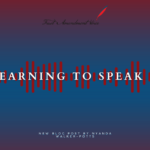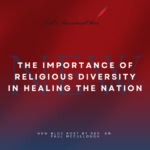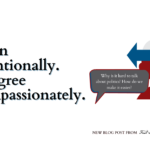
by Steve | Aug 8, 2018 | Uncategorized

Social media is one of the most controversial yet common parts of society today. Almost everyone has a social media account (or several), and while many of us enjoy connecting with friends and family, there are many downsides to social media as well.
Take freedom of the press, for instance. How do you think social media has influenced journalism today: for better or for worse? Let’s examine some of the potential threats that social media poses to our basic press freedoms in the US and abroad:
Inconsistent censorship policies
Facebook, Twitter, Instagram and other major social platforms are regularly criticized for their unclear censorship policies and potential biases against certain individuals and groups. Regardless of one’s political affiliation, we can see how this lack of clarity when it comes to which content is accessible to the public can be damaging for small-time journalists who may be censored for publicizing their opinions on social media.
So how do social media platforms differentiate between truly credible journalism versus fake news or borderline libelous content? For the time being, they’re trying to rely on artificial intelligence to sort the good from the bad, but since the algorithm isn’t perfect, some journalists may fall through the cracks and face stringent censorship policies.
Doxxing journalists
The term “doxxing” refers to the act of gathering and publicly posting someone’s personal information online for the purpose of intimidation. This is an alarmingly frequent tactic used against journalists in order to punish them for unfavorable reporting or frighten them out of their jobs. Doxxing would arguably not be as effective without social media, which allows for the rapid sharing of the most private details about another person for the purpose of harassing, stalking or intimidating them.
If journalists are not free to perform their jobs without fear of getting doxxed as a result of their reporting, then how can we possibly ensure the news we are getting is accurate and not at all influenced by such intimidation tactics?
#FakeNews
A recent study conducted by computer scientists found that an average of 59% of social media users share content without ever clicking on the link they’re sharing! This presents a gloomy outlook for legitimate news organizations that are trying to promote truthful, ethical journalism amid a sea of fake stories with clickbait headlines that are specifically designed to evoke emotional reactions to that content, regardless of it’s actual validity.
In this sense, the spread of completely false information threatens legitimate journalism outlets just as much as the #fakenews label thrown around on social media. This false information distorts our perceptions of reality and makes it more difficult to believe anything we read.

by Steve | Jul 25, 2018 | Uncategorized

Fear appeals are commonplace in political rhetoric and advertising campaigns, but they can have a damaging effect when enough people are quickly persuaded before taking the opportunity to critically deliberate the validity of these appeals.
Also referred to as “fear-induced persuasion,” fear appeals are designed to convince an audience of an idea with horrifying imagery and dread-filled rhetoric. For instance, you might’ve seen some anti-smoking ads that used fear appeals to convince others to stop smoking by showing graphic images of a long-time smoker’s lungs or letting someone with severe emphysema narrate an anti-smoking commercial.
While fear appeals aren’t always bad (e.g., ads to stop people from drunk driving), they can significantly influence our public discourse, for better or for worse. Let’s explore how this happens through some contemporary examples:
Emotionally Charged Rhetoric
Fear appeals almost always start with emotionally charged rhetoric, which involves words and phrases with unfavorable connotations applied to a target. In political and everyday speech, there are several relevant examples of emotionally-driven rhetoric:
And the list goes on and on. The fact of the matter is: it’s important to recognize how emotional language can distort our perceptions of the truth and cause us to react negatively before we even consider all the facts surrounding the individual or group targeted by fear appeals.
Constructing the Enemy
This brings us to the concept of constructing the enemy. Historically, Germany’s Nazi Party offers one of the most recognizable forms of enemy construction, in which a propaganda campaign led to the mass extermination of millions of Jews (who they blamed for poor economic conditions in the country at the time).
In a nutshell, “constructing the enemy” involves extensive rhetorical efforts (using speech, images, “experts,” cherry-picked examples blown out of proportion, propaganda campaigns, etc.) to designate a group of people as an enemy. After 9/11, the uptick in society-wide Islamophobia demonstrated the powerful persuasive appeal of American politicians’ rhetoric about Muslims. Nowadays, the notion that “illegal immigrants are stealing our jobs” is one of the most common examples of fear appeals that is used to justify tighter immigration policies.
How is the First Amendment Involved?
Free speech is one of the essential cores of the First Amendment, but it isn’t 100% unrestricted, according to historical legal precedents. For instance, in the 1969 Supreme Court case, Watts v. United States, it was found that threats must be considered separately from constitutionally protected speech (especially when they’re “true threats,” which may be prosecuted under the law in order to prevent fear, disruptions and violence arising from genuine threats).
A more recent (and complex) example would be that of InfoWars‘ host Alex Jones’ involvement in a lawsuit initiated by parents of Sandy Hook shooting victims, after he claimed the deadly school shooting was a hoax. This is a different kind of fear appeal, in which Jones reduced a real tragedy to a made-up incident, blaming gun control activists for using a fearful “narrative” of children dying in school shootings to get more gun control policies passed in state and federal legislative bodies. In other words, Jones labeling the Sandy Hook massacre as a hoax could be viewed as a fear appeal designed for a pro-2nd Amendment audience.
As we can see, fear appeals are extremely persuasive, both in the US and abroad. Even when they have little to no basis in reality, they can significantly alter public opinions about certain individuals and groups, which could potentially lead to violence against these scapegoated groups. As fervent supporters of constitutional rights for all Americans, we must recognize how fear appeals can subtly change our perceptions of reality and use our First Amendment rights to speak out against fear-based rhetoric that our politicians, media outlets and companies use on a daily basis.

by Steve | Jul 13, 2018 | Uncategorized

When it comes to the news, most people can agree on one thing: few, if any, media organizations are completely unbiased. However, there’s a growing number of people who completely disbelieve anything published by news organizations with long-standing histories of credible reporting, thanks to the recent uptick in “fake news” rhetoric.
To overcome this growing crisis for our First Amendment rights in the US, we can start by recognizing how the existence of a free press is dependent on public trust in its institutions:
Speaking Truth to Power
The reason why freedom of the press was so important to our Founding Fathers is because they recognized how abusive a governing body can become if there are no checks on its power over the people. Throughout history, news organizations have served as checks against the government by reporting any factual gaps between political rhetoric and reality.
The media is responsible for speaking truth to power by reminding citizens how their representatives are voting, exposing scandals and corruption in all levels of government, and critiquing governmental attempts at propaganda to pull the wool over citizens’ eyes. Without public trust in the media, then who are we supposed to believe? Politicians? Talk show commentators? Satirists? Ourselves?
Informing the Citizenry
The media cannot help citizens stay informed about issues that affect them (both directly and indirectly) if those citizens don’t believe anything the media reports. For instance, it would certainly be easier to ignore the suffering and horrors going on around the world – be that ISIS operating in the Middle East, Syrian refugees drowning in the Mediterranean Sea, North Koreans facing death by starvation in their dictatorship society, or even homeless people dying right here at home in the US.
However, it’s important for us to acknowledge what’s going on because change would not be possible without outraged citizens vocalizing their dissent in the form of protest, critiques published on blogs or social media, voting, and other forms of activism. Since individuals do not possess the resources (money, time) to report on issues happening all over the world (or even in our own backyards), it’s up to the media to help us stay informed. But how can the media perform this crucial task if citizens refuse to believe anything the media reports is true?
Funding Diligent Reporting
Newspapers are in crisis mode, with the news industry’s subscriber figures and advertising revenue plummeting year after year. There are many possible explanations behind the decline of American news, but some of the most likely explanations are that fewer Americans are interested in reading the news (especially if they have to pay for it) and fewer Americans trust the news to provide accurate information and unbiased reporting thanks to all of the “fake news” accusations being thrown around in public discourses.
With rapidly decreasing funds for journalists, printing presses, news circulation, website maintenance, and all the other expenses involved for news organizations, how will they continue to fulfill their roles as public informants and government watchdogs? Some people have advocated for citizen journalism, but this is not a viable alternative to professional, trained journalists with minimal bias, ethical standards to adhere to, and enough time and dedication to uncover all the facts involved.
This means that public trust is extremely important when it comes to funding news organizations. If the public doesn’t trust the news, then they won’t pay for the news And as the old adage goes, “you get what you pay for” – in this case, we’ll get low-quality “journalism” from random internet bloggers and possibly fake news sources with hidden ideological agendas.
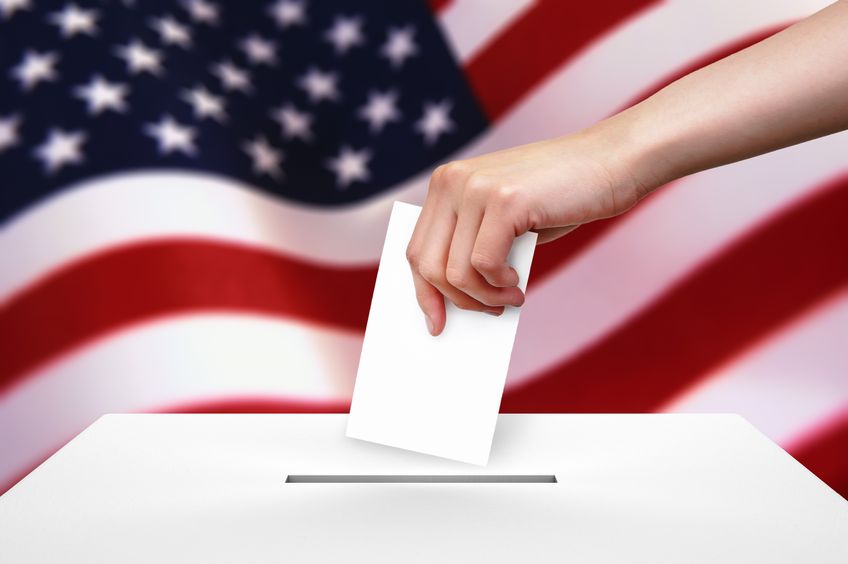
by Dan | Jun 27, 2018 | Uncategorized
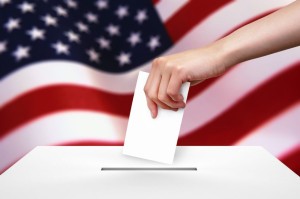 After the school shooting in Parkland, Florida, there has been an uptick in public discourse concerning the legal voting age in the U.S. In many vicinities, the legal voting age is 18. However, there are some districts and areas, such as Takoma Park (Maryland), that have lowered the legal voting age to 16 instead. In 21 states across the country, 17 year-olds can vote in primaries if they’ll be 18 by the general election date, but is this enough?
After the school shooting in Parkland, Florida, there has been an uptick in public discourse concerning the legal voting age in the U.S. In many vicinities, the legal voting age is 18. However, there are some districts and areas, such as Takoma Park (Maryland), that have lowered the legal voting age to 16 instead. In 21 states across the country, 17 year-olds can vote in primaries if they’ll be 18 by the general election date, but is this enough?
Since voting is a crucial First Amendment issue, consider these pros and cons of lowering the U.S. voting age to 16:
Pro: Increase Civic Engagement and Awareness Among Youth
As the American Council of Trustees and Alumni points out, we have a crisis of civic education in the U.S. currently. We have people of all ages who barely know important aspects of history (studies have shown that people are even forgetting about the Holocaust), and many Americans can’t explain the difference between the 3 different branches of the federal government.
This ignorance is not limited to young people (voter apathy happens at every age!), yet we focus on their life inexperience and lack of knowledge as a justification for denying them voting rights. Since young people must obey the laws like any other citizen and they’re affected by the policies our government leaders establish for our society (especially when it comes to education and long-term economic policies), why shouldn’t young people have some say in the laws that uniquely affect their lives? By lowering the voting age, we could likely increase youth involvement in civic participation and bolster their interest in political issues because they’re no longer sitting on the sidelines.
Con: Their Brains Aren’t Fully Developed Yet
A major argument against lowering the voting age is that young people’s brains aren’t fully developed until they’re in their mid-20s. However, this scientific argument demonstrates why 18 is a mostly arbitrary number when it comes to something like voting, not to mention: teenage brains aren’t so different from adult brains.
Yes, teenagers are still immature and learning about how the world works. Yes, teenagers can be prone to emotional decision-making. Yes, teenagers are more susceptible to external influences than adults with more life experience. However, consider how these arguments function when applied to people who are 18 or older:
- Should an adult with maturity issues be denied their right to vote?
- Does everyone have their lives figured out and understand how the world operates by 18? By 30? By 60? Ever?
- Should we assume that rational decision-making is something that automatically kicks in once you turn 18? Are adults (of any age) not prone to emotional decision-making as well?
- Are adults completely immune to external influences (such as fake news, political propaganda, fear appeals-based political advertising, vitriolic campaign rhetoric, etc.) and able (and willing) to make fully-informed decisions about their voting options?
Once you see how the common arguments against young people can be similarly employed to disenfranchise adult voters, the claim that 16-17 year-olds shouldn’t be allowed to vote falls apart.
Pro: Increase Voter Turnout
Did you know that young people have higher voter turnout rates than you might expect? While the issue of mandatory voting could take up a whole other blog post, it’s important to consider what role choice plays in American society. Adults have the freedom to decide whether or not they want to vote, regardless of their education level, work experience, military service, gender, religion, family background, and other factors. All that matters (with the exception of mental disabilities and felony records in some states) is that you’re older than 18.
To increase voter participation in our elections, we should allow younger people the opportunity to vote if they want to. That’s the beauty of America: we have the freedom to decide if we want to participate in our democratic system or not.
Con: Parental Manipulation
Another common argument against lowering the voting age in the US is the notion that parents will force their kids to vote for whomever they’re voting for. However, this argument is non-unique because children grow up with their parents’ political ideology expressed in familial interactions – how is an 18 year-old who still lives at home more immune to parental influences than a 16 year-old?
Furthermore, 16-17 year-olds in the news recently (such as the Parkland shooting survivors and other school shooting survivors) have demonstrated a keen awareness of political issues affecting them, even when their parents were minimally interested in politics beforehand. Perhaps parental manipulation could still happen, but arguably the pros outweigh the cons here.
Pro: Protect Youths’ First Amendment Rights
As the Yale Law & Policy Review points out, voting is speech. Voting is the act of expressing a preference for a candidate, policy, and/or ideology, and in a democratic society, there is arguably no such thing as a “wrong” vote. By preventing young people from voting, we’re preventing them from exercising their First Amendment rights. As we can see from the Parkland shooting survivors, Malala, and other extraordinary youth, people under 18 are already getting involved in politics.
There are even youth volunteering and interning opportunities within political action committees and other political organizations. If young people are interested in politics and want to exercise their First Amendment rights, then who are we to deny them that fundamental right?
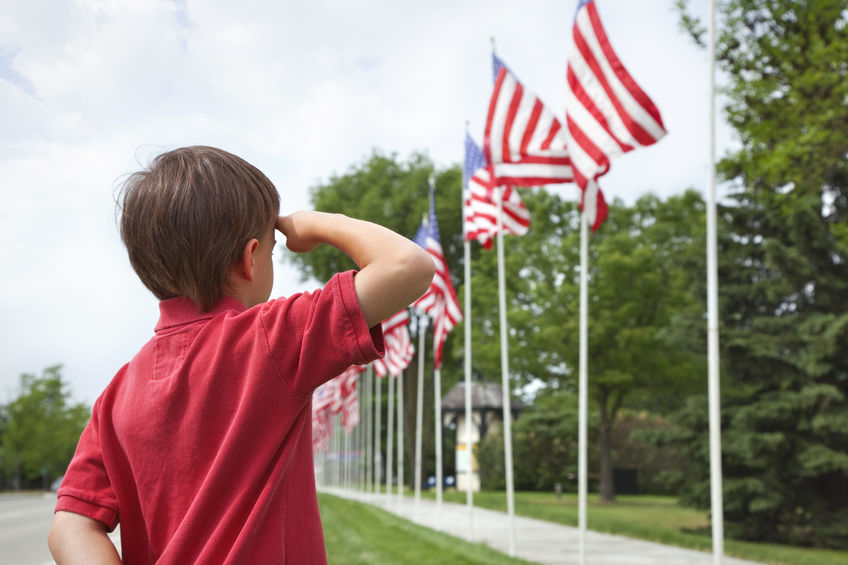
by Dan | Jun 13, 2018 | Uncategorized
 There are civic duties – such as paying taxes and following the laws – then there are civic responsibilities, which LearningToGive.org defines as “comprised of actions and attitudes associated with democratic governance and social participation. Civic responsibility can include participation in government, church, volunteers and memberships of voluntary associations. Actions of civic responsibility can be displayed in advocacy for various causes, such as political, economic, civil, environmental or quality of life issues.”
There are civic duties – such as paying taxes and following the laws – then there are civic responsibilities, which LearningToGive.org defines as “comprised of actions and attitudes associated with democratic governance and social participation. Civic responsibility can include participation in government, church, volunteers and memberships of voluntary associations. Actions of civic responsibility can be displayed in advocacy for various causes, such as political, economic, civil, environmental or quality of life issues.”
If you want to get involved in your community and go beyond what is expected of you as an American citizen, here are 4 ways you can fulfill your civic responsibilities beyond simply voting once every few years.
Volunteer with a Local Nonprofit
There are many benefits of volunteering, including (but not limited to): decreased feelings of loneliness, increased self-confidence, higher levels of empathy for others, and a renewed sense of pride in your civic responsibilities. If you already work 40+ hours per week or attend school full-time, it might be difficult to find time to volunteer with a local homeless center, animal shelter, educational group, or elderly assistance organization. However, volunteerism is crucial for filling in the gaps left by underfunded government programs designed to help those who need it most.
Even if you just have 4 hours per month to spare, every little act of service matters. Our elected officials cannot solve every societal problem we have — but nonprofits and their volunteers can certainly make it better if we’re all willing to lend a hand to our fellow citizens.
Donate to a Civic-Minded Organization
Whether you already volunteer or you have no time in your schedule to accommodate volunteer opportunities at the moment, another way you can demonstrate a high level of civic responsibility is by donating to civic-minded organizations. For instance, First Amendment Voice accepts donations to help protect our most fundamental rights through community outreach programs, informational resources, and annual symposiums on First Amendment issues.
Additionally, the Center for Civic Education is a great nonprofit, nonpartisan resource that empowers students across the US by providing access to high-quality civic education programs.
Help Others Stay Informed
A major problem in the US right now is the proliferation of apathy among voters and nonvoters alike. Understandably, our lives are stressful and busy, but too much focus on ourselves has led many of us to neglect the positive impacts we could be having on our communities through civic participation efforts. You don’t need to dedicate several hours per week to helping others stay informed; instead, you could start by sharing important but underreported news stories from credible news organizations on your social media channels.
As the word citizenship implies, we’re all part of a larger community and we should take pride in fulfilling our civic responsibilities instead of avoiding them to focus on matters that directly impact ourselves. Sharing news stories, spreading awareness of local issues, and encouraging others to share credible information on social media is a great first step toward fulfilling your civic responsibilities.
Get Your Community Involved
A final way you can fulfill your civic responsibilities beyond just going to the polls once per year is getting your community involved in civic-minded efforts at the local, state and national levels. This may involve asking for contributions for a charity run, encouraging friends and family to volunteer with you on one of the many days of service throughout the year, and reminding everyone on social media to get out and vote.
There are no limits to what you as a citizen can do to exceed the minimum expectations of civic responsibility. As John F. Kennedy once said, “ask not what your country can do for you — ask what you can do for your country.”

by Dan | May 23, 2018 | Uncategorized
 America is divided over the issue of offensive speech, but these divisions don’t fall into simple categories of Democrats versus Republicans or Millennials versus Baby Boomers. At some point, many of us, regardless of age or political affiliation, has been offended by something someone else said. Does the First Amendment protect our rights to offend others (or others’ rights to offend us)? Here are 3 things to consider:
America is divided over the issue of offensive speech, but these divisions don’t fall into simple categories of Democrats versus Republicans or Millennials versus Baby Boomers. At some point, many of us, regardless of age or political affiliation, has been offended by something someone else said. Does the First Amendment protect our rights to offend others (or others’ rights to offend us)? Here are 3 things to consider:
Offensive Speech Across Political Boundaries
Feeling offended is not limited to one political party affiliation. Whereas conservatives disparage “liberal snowflakes” for rallying against hate speech and in favor of political correctness, liberal groups and organizations have offended conservatives with the removal of religious or historical symbols in public spaces and media critiques of Republican figures. In other words: everyone is capable of being offended!
Questions that arise from this dilemma are:
- Should the offensive quality of speech be disregarded in legal considerations related to the First Amendment?
- Should the intent of the speaker have any impact on legal decisions involving offensive speech?
- Are there any legitimate harms to the circulation of offensive speech (such as the fighting words issue)?
- Could Democrats and Republicans ever come to a common understanding on issues related to offensive speech and political correctness?
Matal v. Tam (2017)
Contrary to popular misconceptions, there is no “hateful speech” exception to the First Amendment. This notion was reaffirmed in the 2017 Supreme Court decision in the case of Matal v. Tam. To explain his decision, Justice Kennedy wrote, “A law that can be directed against speech found offensive to some portion of the public can be turned against minority and dissenting views to the detriment of all. The First Amendment does not entrust that power to the government’s benevolence. Instead, our reliance must be on the substantial safeguards of free and open discussion in a democratic society.”
The decision in Matal v. Tam case demonstrates how speech viewed as offensive by a group of people is nevertheless protected under the First Amendment. There will likely be many legal cases similar to this one in the years to come.
Nonverbally Offending Others
The act of offending others isn’t limited to verbal speech or comments written in online, public forums. As the ReACT Gallery in Iowa demonstrates, art can be seen as pushing the boundaries of social appropriateness and downright offensiveness, depending on the values, beliefs and perspective of the person viewing a piece of art.
Similarly, offensive gestures such as raising one’s middle finger are typically protected by the First Amendment, and even “symbolic speech” acts such as burning the US flag have been protected by the First Amendment in Supreme Court decisions like Texas v. Johnson (1989). Nonverbal acts can be considered offensive to many different people, but unless these acts could lead to physical retaliation or even violence, they are generally considered protected under the First Amendment.
Do you think there should be laws prohibiting offensive, nonverbal speech? If so, where do we draw the line?








 After the school shooting in Parkland, Florida, there has been an uptick in public discourse concerning the legal voting age in the U.S. In many vicinities, the legal voting age is 18. However, there are some districts and areas,
After the school shooting in Parkland, Florida, there has been an uptick in public discourse concerning the legal voting age in the U.S. In many vicinities, the legal voting age is 18. However, there are some districts and areas, 
 There are civic duties – such as paying taxes and following the laws – then there are civic responsibilities, which
There are civic duties – such as paying taxes and following the laws – then there are civic responsibilities, which 
 America is divided over the issue of offensive speech, but these divisions don’t fall into simple categories of Democrats versus Republicans or Millennials versus Baby Boomers. At some point, many of us, regardless of age or political affiliation, has been offended by something someone else said. Does the First Amendment protect our rights to offend others (or others’ rights to offend us)? Here are 3 things to consider:
America is divided over the issue of offensive speech, but these divisions don’t fall into simple categories of Democrats versus Republicans or Millennials versus Baby Boomers. At some point, many of us, regardless of age or political affiliation, has been offended by something someone else said. Does the First Amendment protect our rights to offend others (or others’ rights to offend us)? Here are 3 things to consider:

